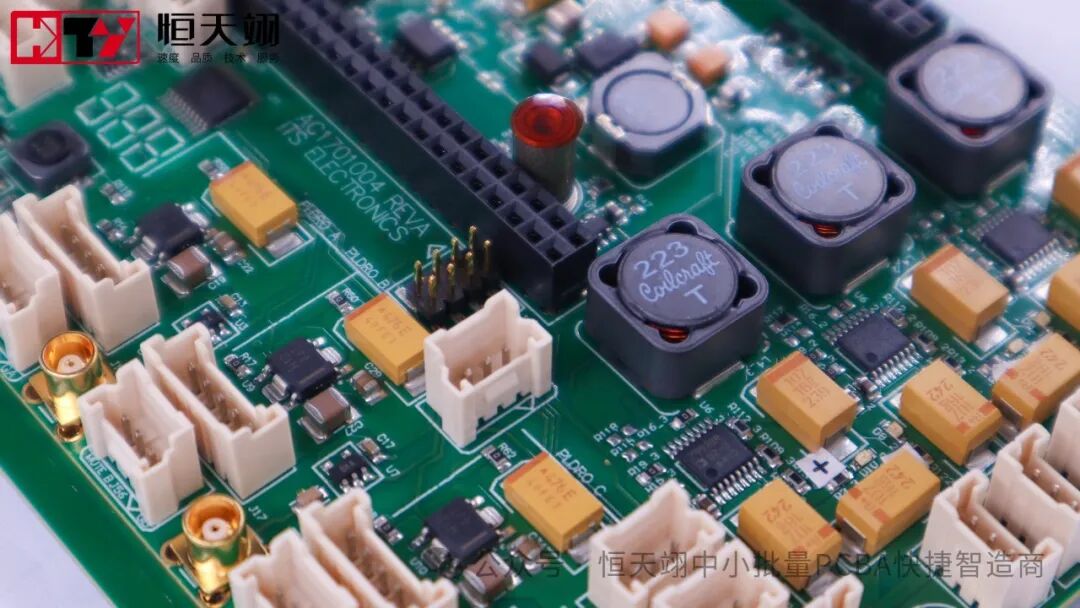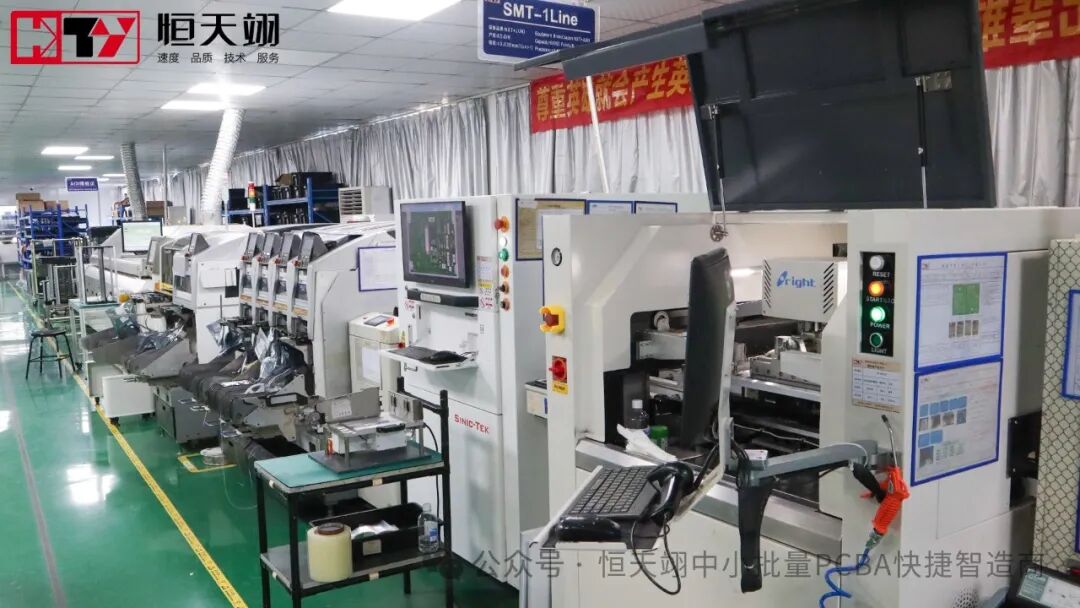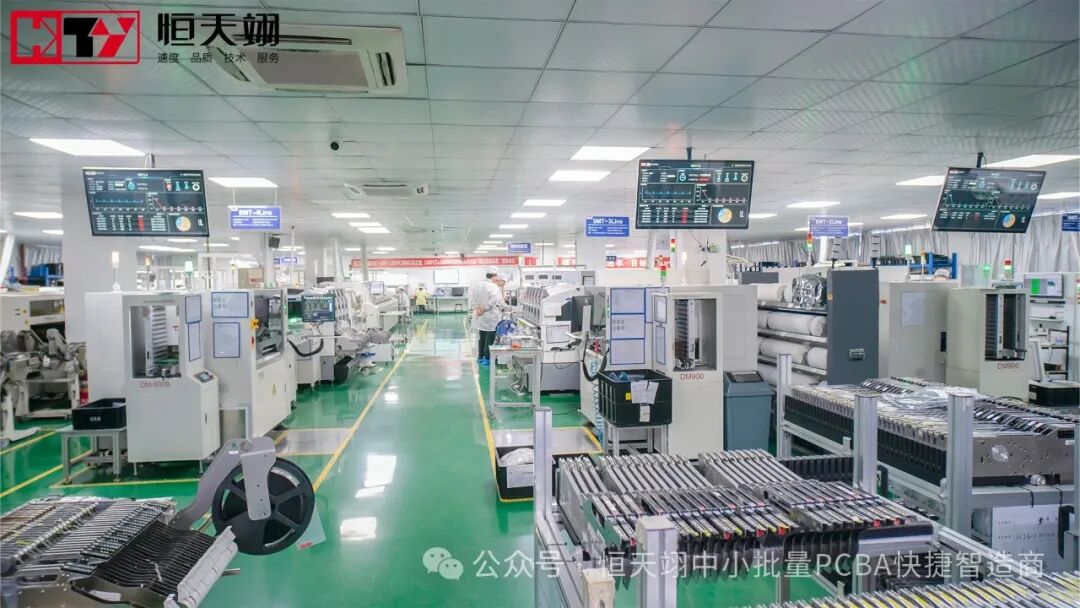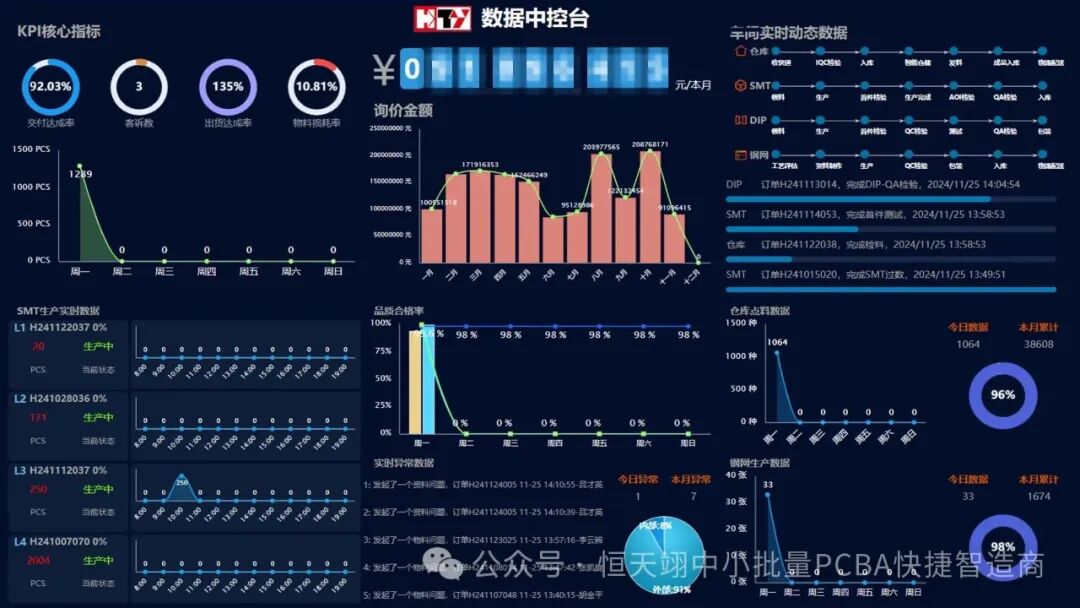PCBA production and SMT processing are two closely related but distinct concepts in the field of electronic manufacturing. This article focuses on Hengtianyi Company, exploring the differences between the two and their applications in actual production.
In-Depth Analysis of the Differences Between PCBA Production and SMT Processing
——Hengtianyi
1.Basic Definitions and Differences Between PCBA and SMT
PCBA (Printed Circuit Board Assembly) refers to the entire process of mounting electronic components onto a printed circuit board (PCB), including SMT placement, DIP insertion, reflow soldering, testing, and packaging.

On the other hand, SMT (Surface Mount Technology) is an important component of PCBA production, primarily involving the direct installation of micro-components onto the surface of the PCB using a placement machine, followed by soldering through reflow or wave soldering.

From a definitional standpoint, SMT is a part of PCBA, but PCBA encompasses a broader scope, covering the complete process from component procurement to final product testing. Therefore, SMT processing only involves the mounting and soldering of components, while PCBA includes subsequent assembly, testing, and packaging.
2.Major Differences Between PCBA and SMT
Differences in Process Scope
SMT processing refers specifically to the application of surface mount technology, primarily completing the mounting and soldering of micro-components; whereas PCBA includes a wider range of processes such as DIP insertion, reflow soldering, testing, and packaging.
Differences in Applicable Scenarios
SMT is suitable for high-density, miniaturized electronic products, such as smartphones and tablets; while PCBA is applicable to various complex electronic products, including communication devices, medical instruments, and industrial control equipment.
Differences in Flexibility and Efficiency
SMT processing is characterized by high automation and fast production efficiency, making it suitable for mass production; whereas PCBA processing, due to its inclusion of more procedures, offers greater flexibility but relatively lower efficiency.
Differences in Cost and Quality Control
The costs of SMT processing are primarily concentrated on equipment investment and component procurement, while PCBA processing requires additional consideration of assembly, testing, and packaging costs. Additionally, quality control in PCBA is more stringent, involving multiple stages of inspection and optimization.
3.Hengtianyi’s Advantages in the PCBA and SMT Fields

Hengtianyi Electronics, as a company focused on providing one-stop services for PCBA, has established a benchmark position in the industry with its advanced technology and comprehensive production system. The company possesses9 fully automated SMT production lines and2 DIP wave soldering lines, and has introduced high-precision production equipment imported from Japan, such as the JUKI RS1 placement machine and the Jintuo 10-zone reflow soldering furnace.
Intelligent Production System

Hengtianyi has achieved real-time monitoring and optimization of production data through the MES+ERP+IOT management system, ensuring high precision and reliability in PCBA production. For example, in the field of robotic controllers, the company has achieved micron-level mounting precision for key PCBA components.
Hengtianyi provides a full-chain service from design to production, including component procurement, SMT placement, DIP insertion, testing, and packaging. This model not only improves production efficiency but also reduces customers’ supply chain management costs.
Technological Innovation Capability
The company continuously invests in R&D resources, developing several innovative technologies, such as lead-free soldering processes, electrostatic protection systems, and intelligent material racks. These technologies effectively enhance the yield and consistency of PCBA products.
Flexible Production Capability
In response to the demand for small-batch, multi-variety orders, Hengtianyi has established a flexible production line scheduling model that can quickly respond to customer needs and ensure delivery times.
4.Choosing Between PCBA and SMT in Practical Applications
When companies choose between PCBA or SMT processing, they need to weigh their specific requirements. For example:
Mass Production
If customers require mass production of electronic products (such as smartphones), SMT processing should be prioritized due to its high automation and efficiency.
Complex Product Requirements
For products that require complex assembly and testing (such as medical devices), PCBA processing is more suitable as it includes more procedures to meet diverse needs.
Balancing Cost and Quality
If customers are cost-sensitive and have high quality requirements, they can choose PCBA one-stop services, which can reduce intermediate links, lower costs, and improve quality.
Although PCBA and SMT have overlaps in processes, they each have their own focus in terms of definitions, scope, and application scenarios. Hengtianyi, with its advanced technology and one-stop service capabilities, has established itself as a benchmark in the PCBA field. Whether pursuing high-efficiency mass production or requiring complex assembly for small-batch orders, Hengtianyi can provide professional solutions. In the future, as the electronic manufacturing industry continues to develop, the integration of PCBA and SMT will become closer, providing customers with higher quality and more efficient products and services.